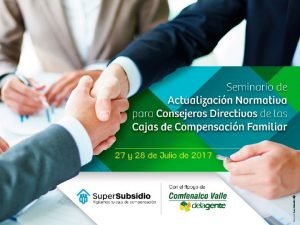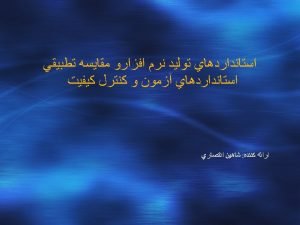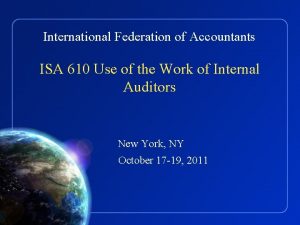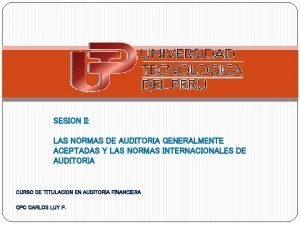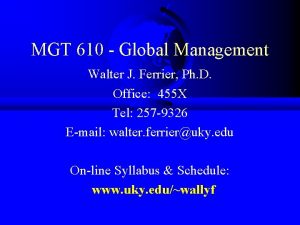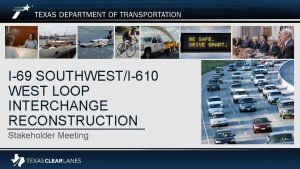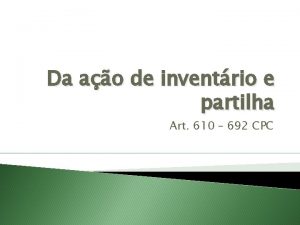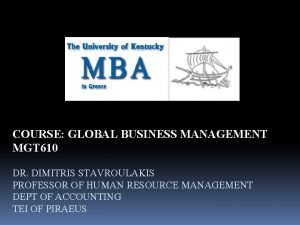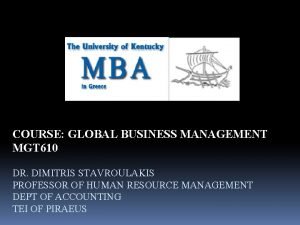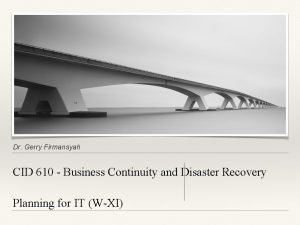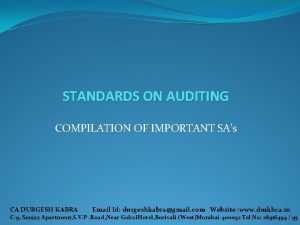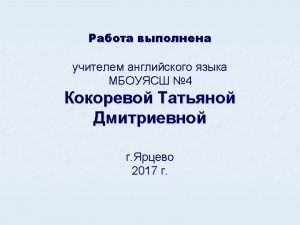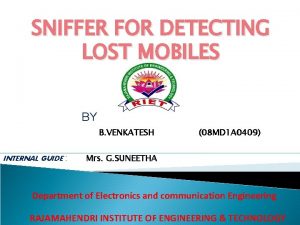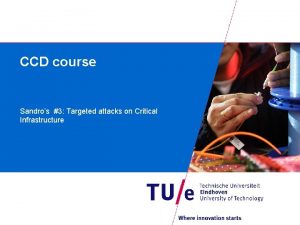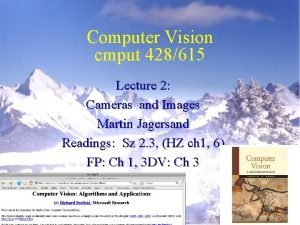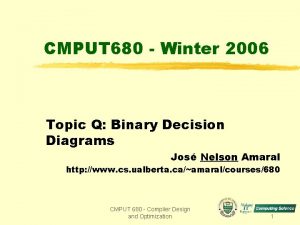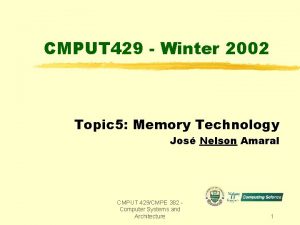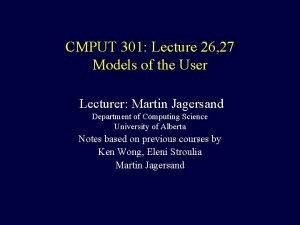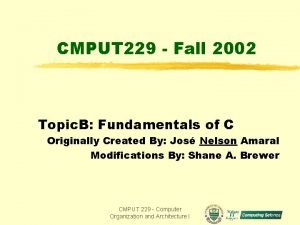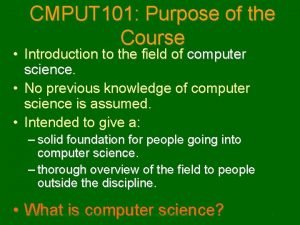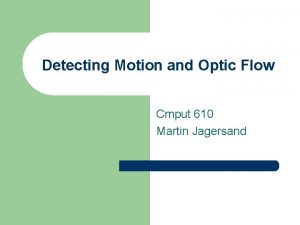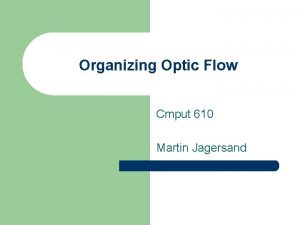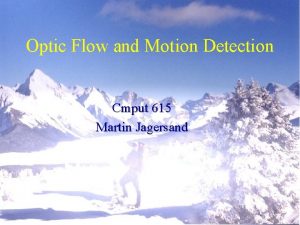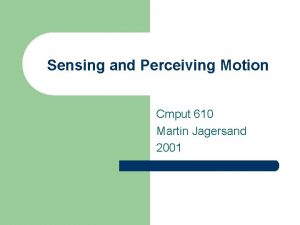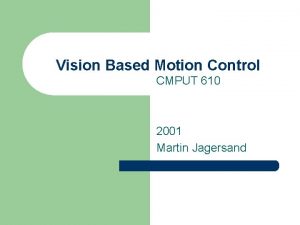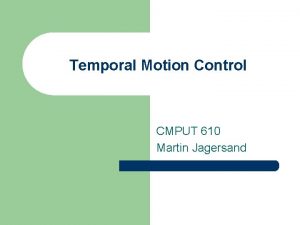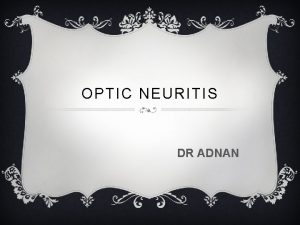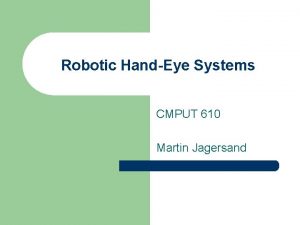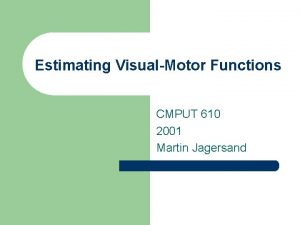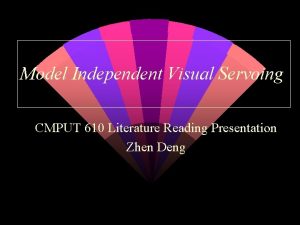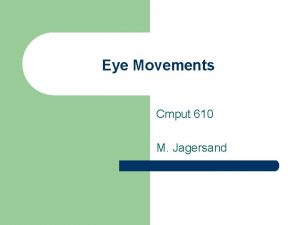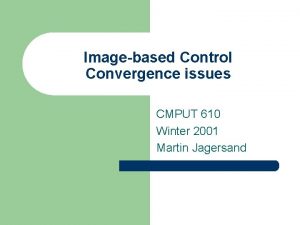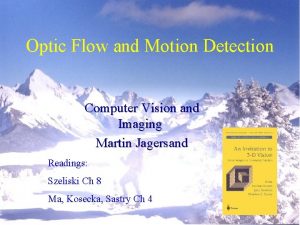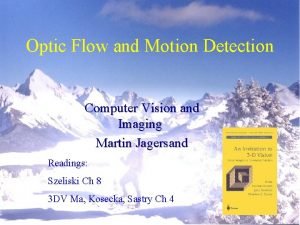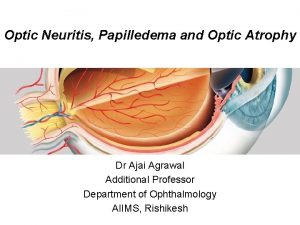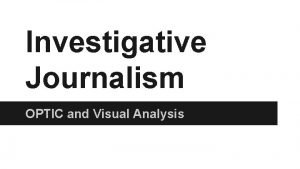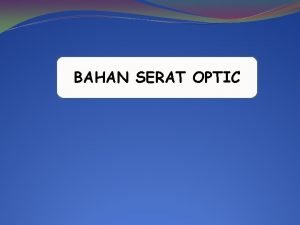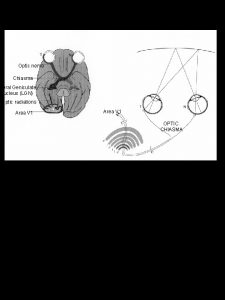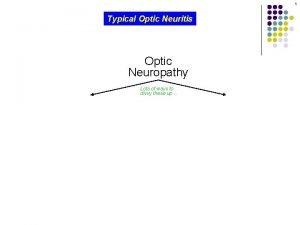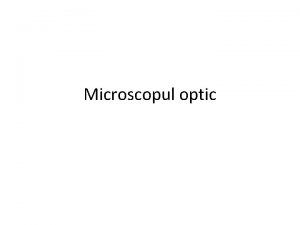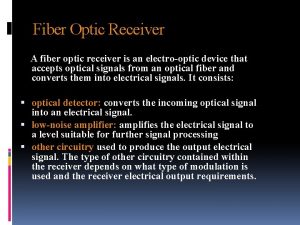Detecting Motion and Optic Flow Cmput 610 Martin






![The motion field l l Vector field over the image: [u, v] = f(x, The motion field l l Vector field over the image: [u, v] = f(x,](https://slidetodoc.com/presentation_image_h2/b0d412262d05c06e470e459c61345e59/image-7.jpg)
















- Slides: 23

Detecting Motion and Optic Flow Cmput 610 Martin Jagersand

Today: l l l Image motion and optic flow More on projects Decide on project schedules

Image motion l l Somehow quantify differences in image sequences. Image differences. Optic flow 3 -6 dim motion

Motion is used to: l l l Attention: Detect and direct using eye and head motions Control: Locomotion, manipulation, tools Vision: Segment, depth, trajectory

Small camera re-orientation Note: Almost all pixels change!

Classes of motion l l Still camera, single moving object Still camera, several moving objects Moving camera, still background Moving camera, moving objects
![The motion field l l Vector field over the image u v fx The motion field l l Vector field over the image: [u, v] = f(x,](https://slidetodoc.com/presentation_image_h2/b0d412262d05c06e470e459c61345e59/image-7.jpg)
The motion field l l Vector field over the image: [u, v] = f(x, y), u, v = Vel vector, x, y = Im pos FOE, FOC Focus of Expansion, Contraction

Optic/image flow l Assumption: Image intensities from object points remain constant over time.

Taylor expansion of intensity variation l Keep linear terms Use constancy assumption and rewrite: l Notice: Linear constraint, but no unique solution

Aperture problem l Rewrite as dot product l Notice: Can only detect vectors normal to gradient direction

Aperture problem 2

Using several points l Over determined equation system l Im = Mu Can be solved in e. g. least squares sense using matlab u = MIm

3 -6 D Optic flow l Generalize to many freedooms (DOFs)

All 6 freedoms X Y Rotation Scale Aspect Shear

Flow vectors l Norbert’s trick: Use an mpeg-card to speed up motion computation

Application: mpeg compression

Other applications: l l Recursive depth recovery: Kostas and Jane Motion control (we will cover) Segmentation Tracking

Part 2: Project discussion l l How to start and carry out a literature search and reading project What is a reasonable schedule?

Literature search l l Goal: Find the 10 -15 most relevant and recent papers in a subarea. Method: 1. 2. 3. 4. Seed with a few relevant papers. Do citation search backwards and forwards. Find common “buzz words”. Do title and abstract text search. Do internet search. e. g. “Cora” from justresearch

Literature search 2 l Expect to: – – – l Read the titles of hundreds of papers Read the abstract of 30 -50 of papers Skim through dozens of papers In order to find the 10 -15 or so most relevant.

Report: l l Write a review article summarizing the main contributions and comparing the results in the papers. Challenge: Master the concepts of the papers from only reading. – – Some papers are difficult to fully grasp without trying the concepts Some are wrong or incomplete

Alternative: Practical project l l l Read a few papers (Provided by Martin) Do a computer implementation and perform experiments based on the papers Write a report on the papers, your work and the experimental results

Projects: rest of semester: l l l Decide on project, consult with Martin Write project proposal and time plan Course presentations: – – l Reading project: Select one or two papers and present to class Practical project: Present your work. Final report
 Ley 610
Ley 610 Ieee 610
Ieee 610 Ipc-610 class 3
Ipc-610 class 3 Ias 610
Ias 610 Nia 580
Nia 580 Mgt 610
Mgt 610 I-69/i-610 interchange
I-69/i-610 interchange Inventrio
Inventrio Mgt 610
Mgt 610 Mgt 610
Mgt 610 Gerry firmansyah
Gerry firmansyah Audit is important
Audit is important Area 610
Area 610 Sniffer for detecting lost mobiles
Sniffer for detecting lost mobiles Detecting evolutionary forces in language change
Detecting evolutionary forces in language change Event 4672
Event 4672 How do fraud symptoms help in detecting fraud
How do fraud symptoms help in detecting fraud Detecting havex
Detecting havex Cmput 274
Cmput 274 Cmput 365
Cmput 365 Cmput 429
Cmput 429 Cmput 301
Cmput 301 Cmput 229
Cmput 229 Cmput
Cmput
